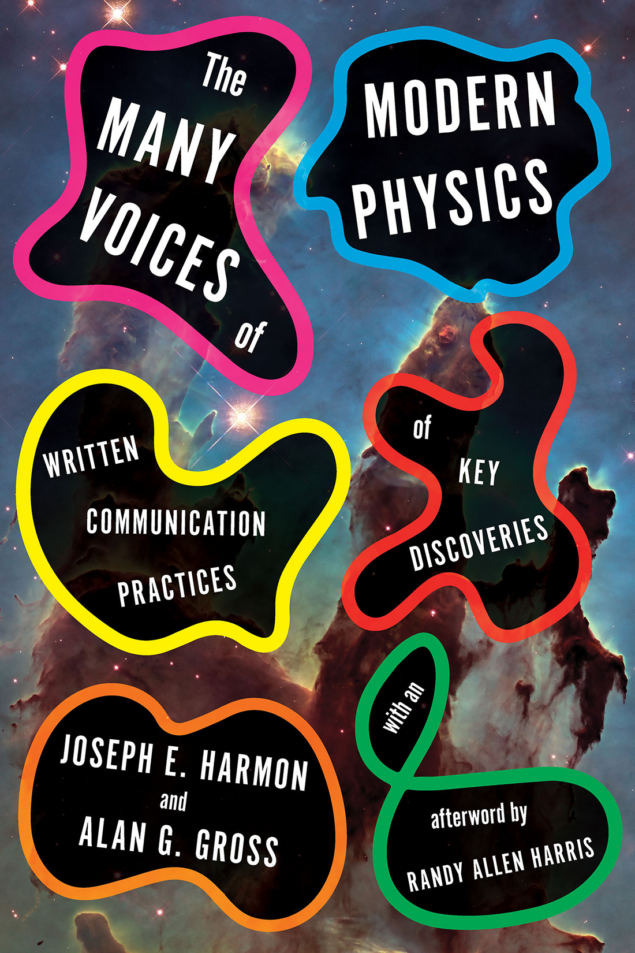The Many Voices of Modern Physics: Written Communication Practices of Key Discoveries by Joseph E Harmon and Alan G Gross, University of Pittsburgh Press
This book provides a rich glimpse into written science communication throughout a century that introduced many new and abstract concepts in physics. It begins with Einstein’s 1905 paper “On the Electrodynamics of Moving Bodies”, in which he introduced special relativity. Atypically, the paper starts with a thought experiment that helps the reader to follow a complex and novel physical mechanism. Authors Harmon and Gross analyse and explain the terminological text and bring further perspective by adding comments made from other scientists or science writers during the time. They follow this analysis style throughout the book, covering science from the smallest to the largest scales and addressing the controversies surrounding atomic weapons.

The only exception from written evaluations of scientific papers is the chapter “Astronomical value”, in which the authors revisit the times of great astronomers such as Galileo Galilei or the Herschel siblings William and Caroline. The authors show that, even back then researchers were in need of sponsors and supporters to fund their research. In Galilei’s case, he regularly presented his findings to the Medici family and fuelled fascination in his patrons so that he was able to continue his work.
While writing the book, Gross, a rhetoric and communications professor, died unexpectedly, leaving Harmon, a science writer and editor at Argonne National Laboratory in communications, to complete the work.
While somewhat repetitive in style, readers can pick a topic of interest from the table of contents and see how scientists and communicators interacted with their audiences. While in-depth scientific knowledge is not required, the book is best targeted at readers who are familiar with the basics of physics and who want to gain new perspectives on some of the most important breakthroughs during the past century and beyond. Indeed, by casting well-known texts in a communication context, the book offers analogies and explanations that can be used by anyone involved in public engagement.








